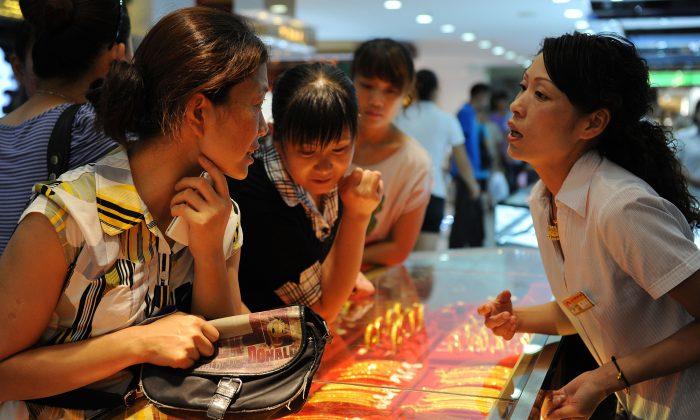China is the world’s largest producer, consumer, and importer of gold. But that’s not enough. The country is taking steps to become the dominant power in gold trading and lending as well—and it has different reasons for doing so.
A year ago, Epoch Times first reported China’s ambition to take control of physical gold pricing. According to a Reuters report, we are getting closer to the official launch of a yuan-denominated physical price for gold.
“I think what the Chinese are trying to do is creating a real market that reflects supply and demand for physical gold,” said Simon Mikhailovich, managing director at Tocqueville Bullion Reserve last year.
“They are working on building an infrastructure in which the pricing mechanism of gold and silver and other commodities can be transferred from the West to the East,” said Willem Middelkoop, principal at the Commodity Discovery Fund and insider to Communist Party deliberations on gold.
If China launches this new pricing system, it would mark an important next step in China’s quest to dominate world gold markets. It already has a futures exchange with a new standard for 1 kilogram (35.27 ounces) 0.999-purity gold bars. This rivals the New York Comex future exchange, which deals in 100-ounce contracts, and where only 1 in 300 trades actually results in physical delivery, according to Middelkoop.
The fix for physical gold would rival the London Bullion Market Association (LBMA), where a couple of banks set the price in secret twice every trading day, and where rumors of price manipulation abound.

But what are the benefits? China has official holdings of 1,762 tons as of the end of 2015, but experts believe it effectively controls many more tons.
“So we know China is getting about 1,600–1,700 tons of gold a year. They’ve been doing this for about seven years, so they have well in excess of 10,000 tons, maybe as much as 13,000 tons of gold that they’ve acquired in the last seven years. We don’t know how much of that is going to the government, how much of that is going to private consumption,” says James Rickards, author of “The New Case for Gold.“
According to Rickards, China has now completed the lion’s share of its gold-purchase program, which puts it on level terms with the United States and the Eurozone.
If China controls the price for physical as well as for paper future contracts, it can control the real price of gold, which has been manipulated downward by the LBMA and the COMEX, not only according to experts like James Rickards and Willem Middelkoop, but also by a recent admission on the part of Deutsche Bank AG.
Skip to 14:16 in the video to directly delve into financial-system reform and China.
Effectively, China can come out and reveal the total amount of gold it holds as well as a higher price. This would be useful to increase its negotiating power with the West should there be another financial crisis and a reform of the financial system.
By using gold, but also other levers like the Asian Infrastructure and Investment Bank (AIIB), China has influenced the United States to admit it to the International Monetary Fund’s (IMF) global reserve currency, the Special Drawing Rights (SDR).
“Here’s why some people speculate: The Chinese are going to launch the yuan as a global reserve currency backed by gold and run the dollar off the road. That’s possible, but I don’t really see that as what they’re doing. What they are doing is hedging their position because they have about $2 trillion in U.S. dollar-denominated assets,“ Rickards says.
He believes there will be a global solution and not a yuan-based solution for a new reserve currency. But even if this is not China’s goal, futures trading in yuan, as well as physical trading in yuan takes away demand for dollars and channels it to yuan. How much demand? This depends on the price of gold as much as on which trading partner can deliver the goods when push comes to shove.






Friends Read Free